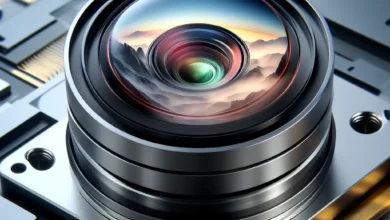AI image upscaler
AI image upscaling is a revolutionary technology that has transformed the way we enhance and upscale images. Traditional image upscaling techniques often resulted in blurry and pixelated images, lacking the detail and quality required for modern applications. However, with the advent of AI-powered image upscalers, these limitations have been surpassed, offering high-quality, detailed images with enhanced resolution.
At the core of AI image upscaling lies deep learning algorithms and neural networks. These algorithms can analyze low-resolution images and generate higher-resolution versions by predicting missing details and textures. Unlike conventional interpolation methods, which simply replicate pixels and often result in blocky images, AI upscaling models can understand the content of the image and recreate missing information more intelligently.
One of the primary advantages of AI image upscaling is its versatility. These algorithms can handle various types of images, including photographs, artwork, and even digital media such as movies and videos. They have found widespread use in industries like photography, design, video production, and gaming, where high-resolution content is crucial for a captivating user experience. Check Best Ai Image Upscaler in 2023 : https://www.imagewith.ai/blog/best-ai-image-upscaler-to-upscale-your-images-free-online
AI image upscalers come in two main types: single-image and multi-image upscalers. Single-image upscalers focus on analyzing and upscaling individual images, making them suitable for tasks such as enlarging photographs or images for printing. Multi-image upscalers, on the other hand, can upscale videos and sequences of images by using information from neighboring frames to improve the overall quality and consistency of the content.
One of the most popular AI image upscaling methods is based on Generative Adversarial Networks (GANs). GANs consist of two neural networks: a generator and a discriminator. The generator creates high-resolution images from low-resolution inputs, while the discriminator assesses the realism of the generated images. Through iterative training, the generator becomes adept at creating realistic and detailed images, fooling the discriminator in the process.
Another common approach is the use of convolutional neural networks (CNNs). CNNs are particularly effective in capturing and learning complex patterns in images, which makes them well-suited for image upscaling tasks. They excel at extracting features from low-resolution images and transforming them into high-resolution counterparts.
AI image upscalers have not only improved image quality but have also saved time and resources for professionals in various fields. They have streamlined the image enhancement process, reducing the need for manual interventions and producing better results in less time.
However, despite their remarkable capabilities, AI image upscalers are not without limitations. In some cases, they may introduce artifacts or distortions in the upscaled images, especially when dealing with heavily compressed or low-quality source images. As with any AI system, the quality of the output heavily depends on the quality and diversity of the training data.
In conclusion, AI image upscaling has revolutionized the way we enhance and upscale images, providing high-quality results with enhanced resolution. By harnessing the power of deep learning and neural networks, these algorithms have found applications in various industries, offering better image quality, saving time, and streamlining workflows. As technology continues to evolve, we can expect even more advanced AI upscaling techniques that further enhance the visual experience across different domains.



